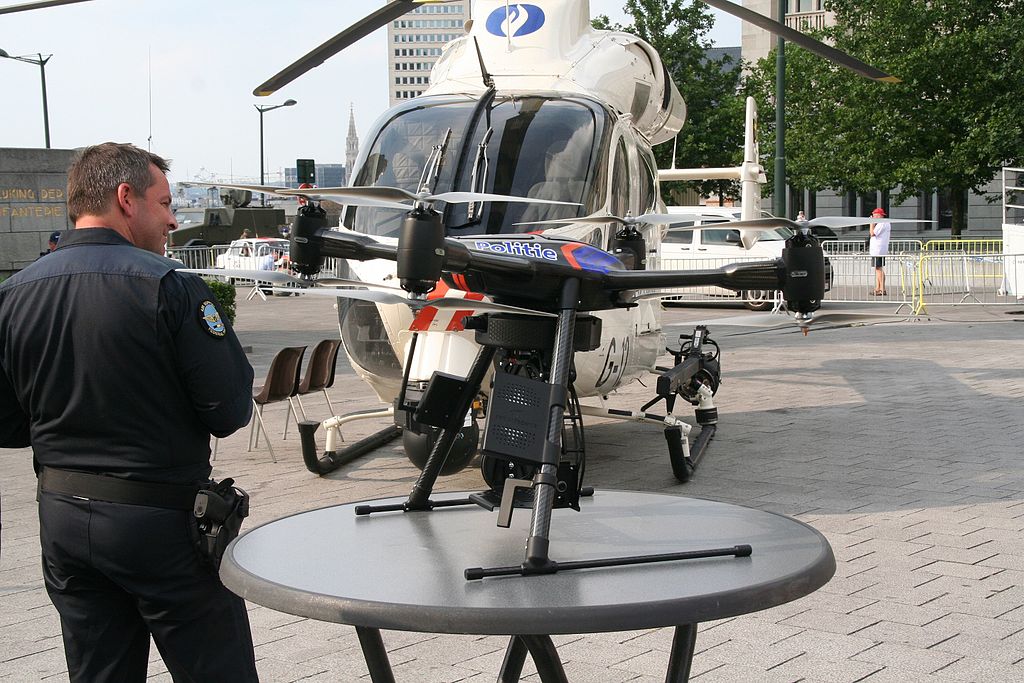This post is also available in:
 עברית (Hebrew)
עברית (Hebrew)
Law enforcement agencies across the US are adopting unmanned aerial systems (UAS) for operations ranging from search and rescue to traffic accident reconstruction and SWAT response. Policeone.com takes an in-depth look at considerations for police departments looking to implement a UAS program.
For public safety, a UAS offers a safe, effective and affordable option to have as an aviation asset immediately available for a variety of missions.
In 2015, approximately six agencies in the United States had an active UAS unit. In 2017, over 350 agencies had an operating UAS unit. This year is on pace to grow that number exponentially.
With many UAS options, it can be difficult to know which system is right for a certain agency. This article outlines some of the most important factors to consider when purchasing a public safety UAS.
- Flight time for a police UAS – Most UAS are capable of flight times of 20-30 minutes, with more expensive models having flight time capability of 50 minutes. In addition to onboard battery power, tethered systems allow the UAS to be powered from a ground power unit that can allow indefinite flight times for long duration operations.
- Weather capabilities – All UAS for public safety must deal with the weather, specifically wind, which can be a limiting factor regarding the mission capabilities. Some smaller UAS have a maximum wind speed capability of 20mph, whereas a larger, more powerful aircraft can effectively deal with winds in excess of 35 to 40mph.
- Sensor availability – Many UAS are able to utilize sensors beyond the visual electro-optical (EO) camera. Zoom cameras provide the ability to have an effective standoff from the operational area. Thermal cameras allow for the detection of radiated heat. Infrared allows for the ability to see at night and LiDAR provides exceptionally accurate data for crime and accident scene documentation.
- Payload installation and deployment capability – Having the ability to carry various payloads expands the mission profile of the public safety UAS. Installed payload options include spotlights, HAZMAT sample cards, gas monitors and radio frequency tracking antennas. Deployable payload examples include life preservers, survival bags, GPS tracking units and small tools.
- Dual operator capability – During some public safety operations it can be more effective to have the flight crew consist of both a pilot and a sensor operator. Various models allow the sensor operator to control the camera or sensor unit, allowing the pilot to concentrate on flying the UAS. This can be effective during search and rescue or suspect pursuit missions.
- Manufacturer support – Always consider the ability to receive customer support from the manufacturer of your UAS. The purchase of a sophisticated system can be a significant financial investment for an agency. Having a UAS that becomes unsupported or unrepairable after purchase can be problematic.
- Police UAS cost – Cost is always a major consideration, and typically the primary factor when purchasing a UAS. It is important to lay out a detailed list of needs and wants related to your public safety mission requirements. The needs must be met to be effective, and the wants are extras that would expand your mission envelope, but are not required to be effective for your primary mission. Also, make sure to include other necessary costs of accessories, extra batteries and, most important, training.
A UAS can be a powerful force multiplier for public safety agencies. It is a safe, efficient and effective way to increase mission capabilities. With careful research of the right drone for a police department, this technology can be added to the toolbox and provide the advantages of an aviation unit at an affordable level.


























